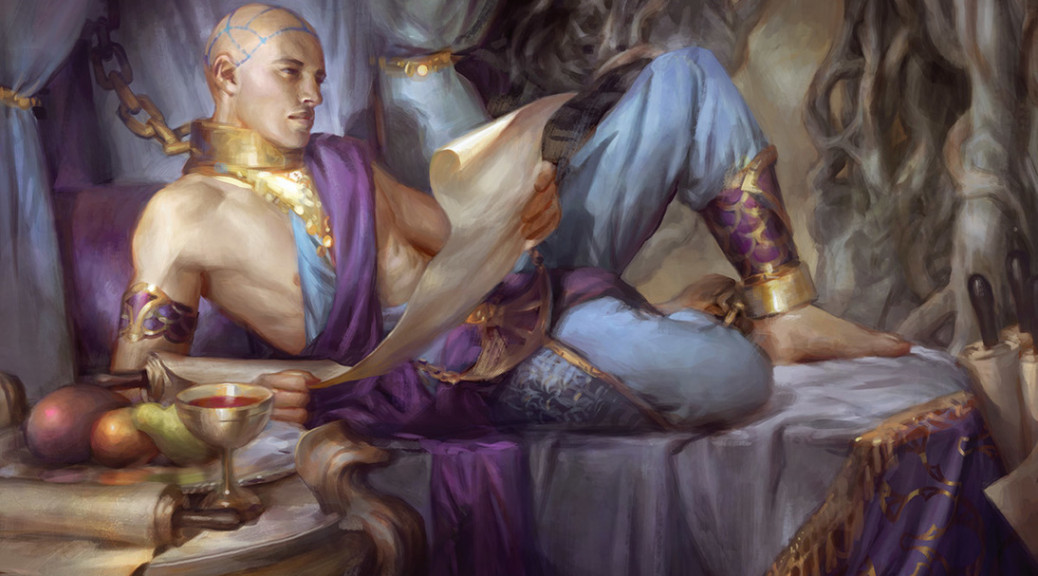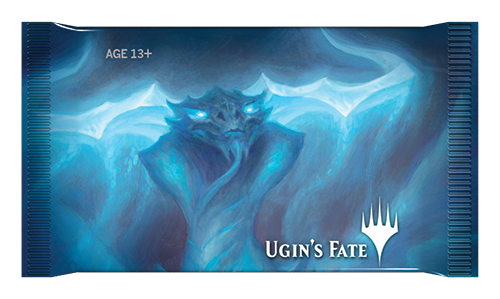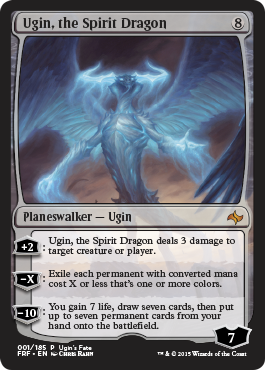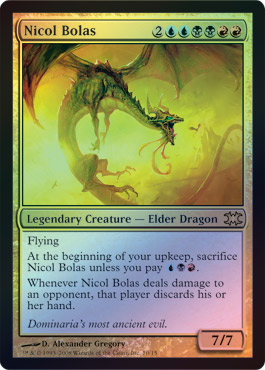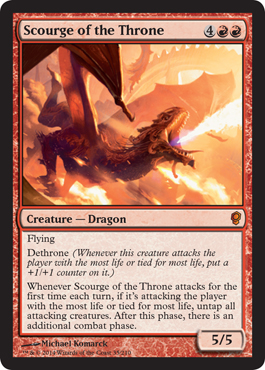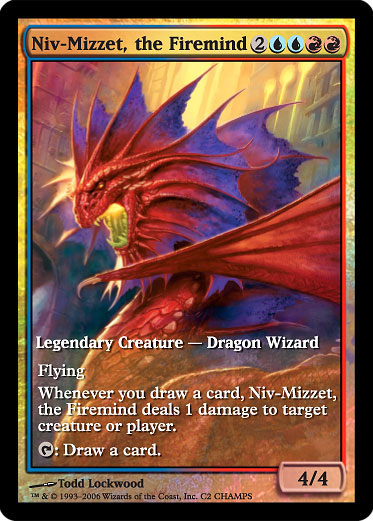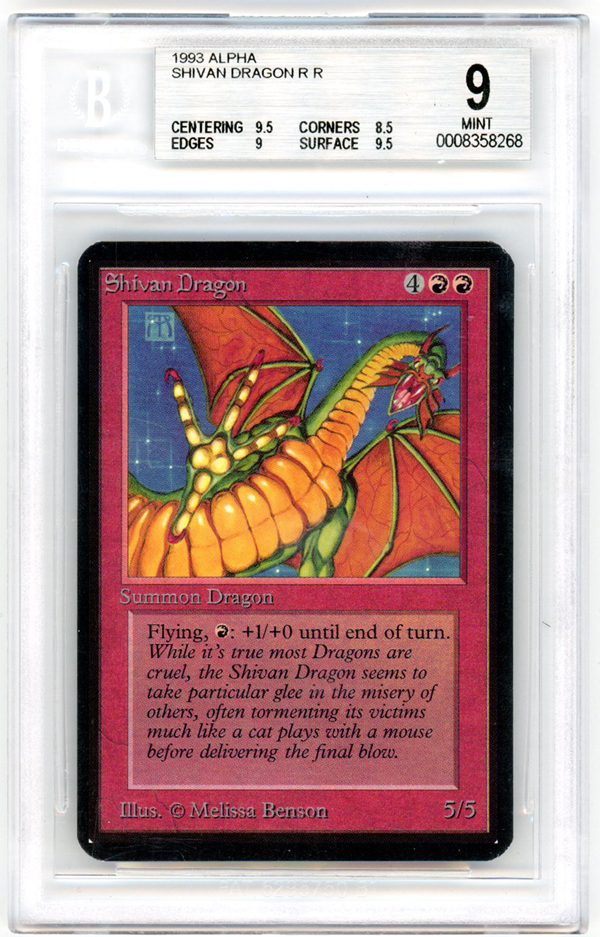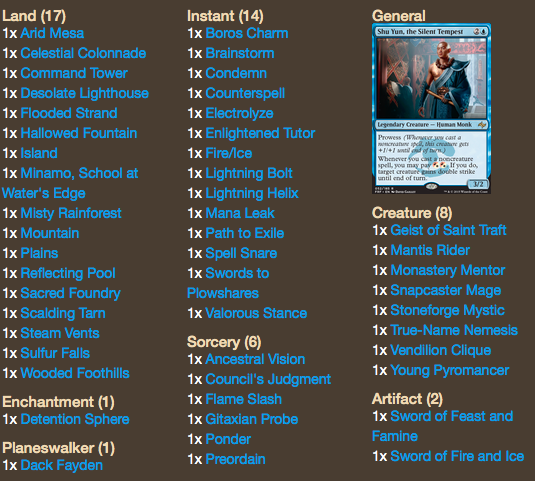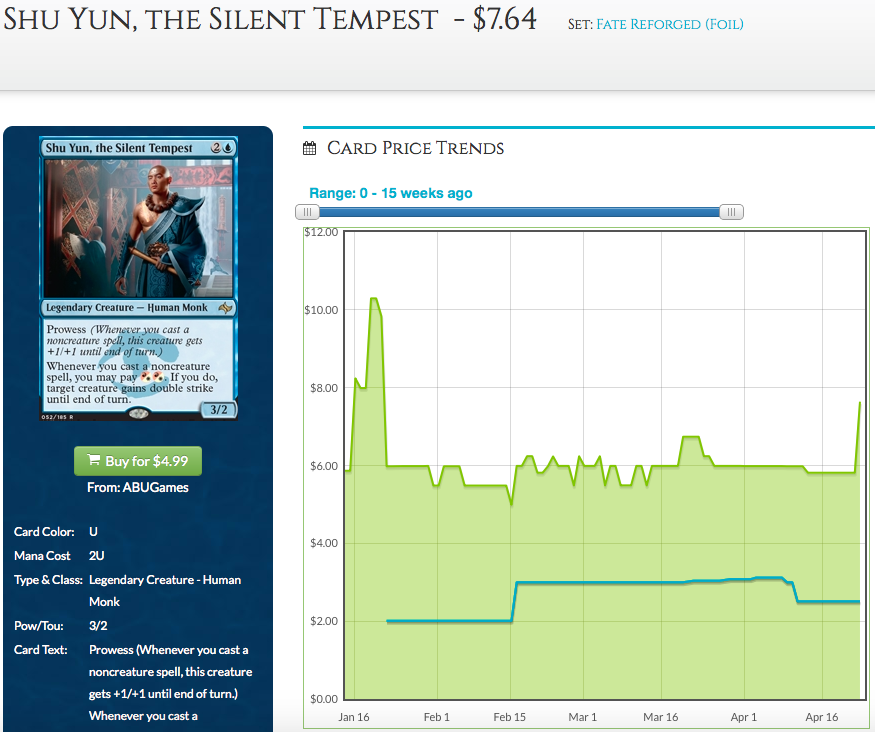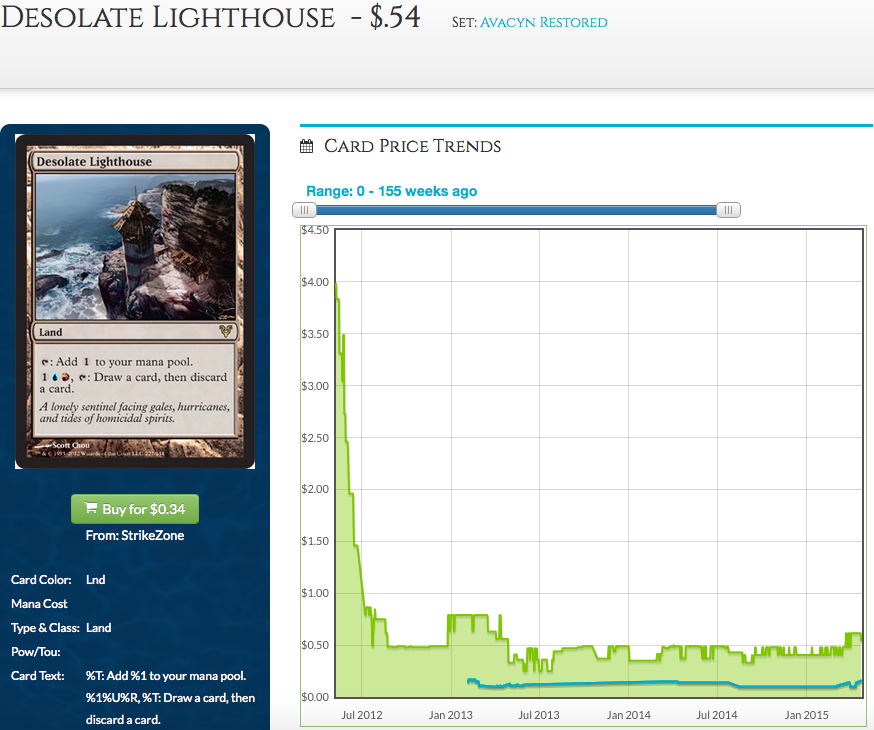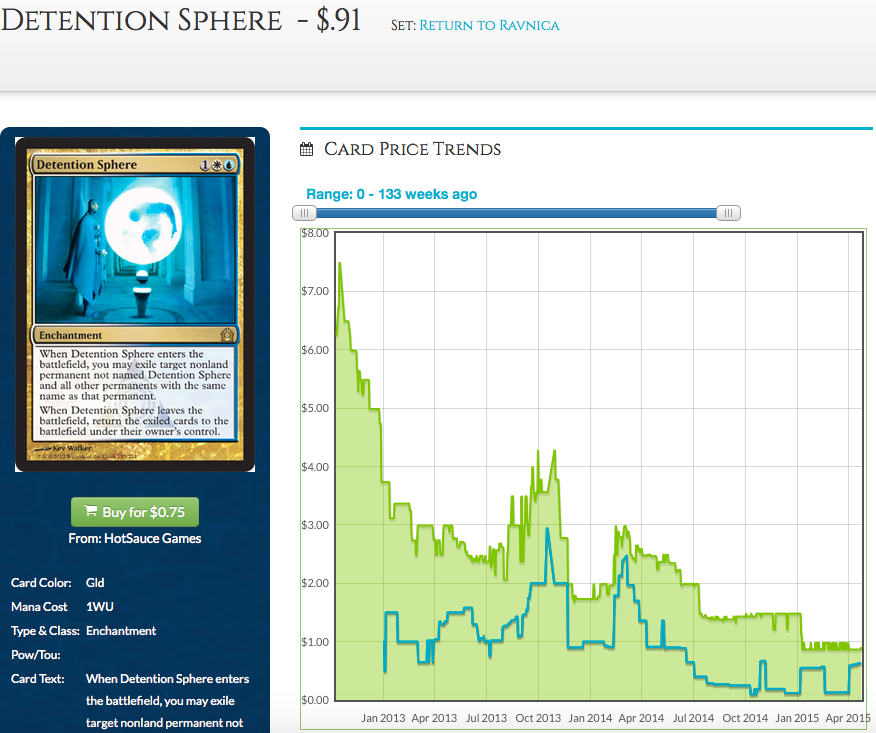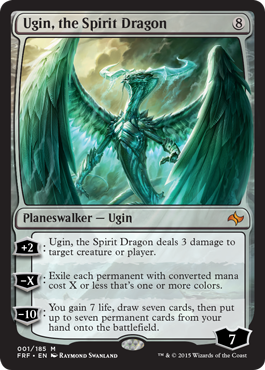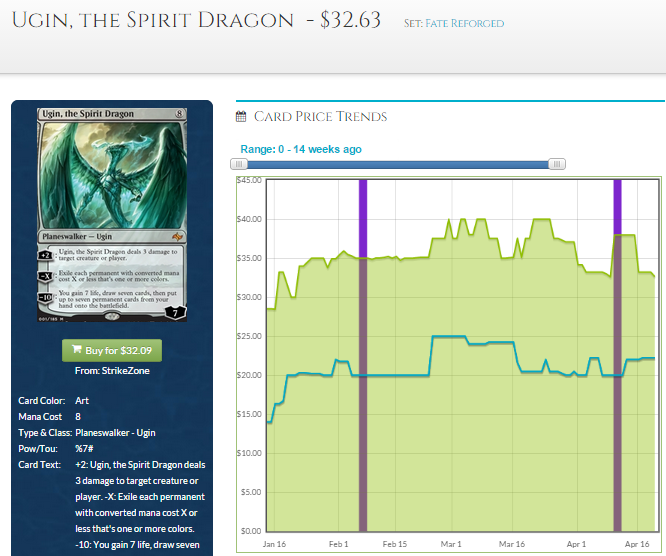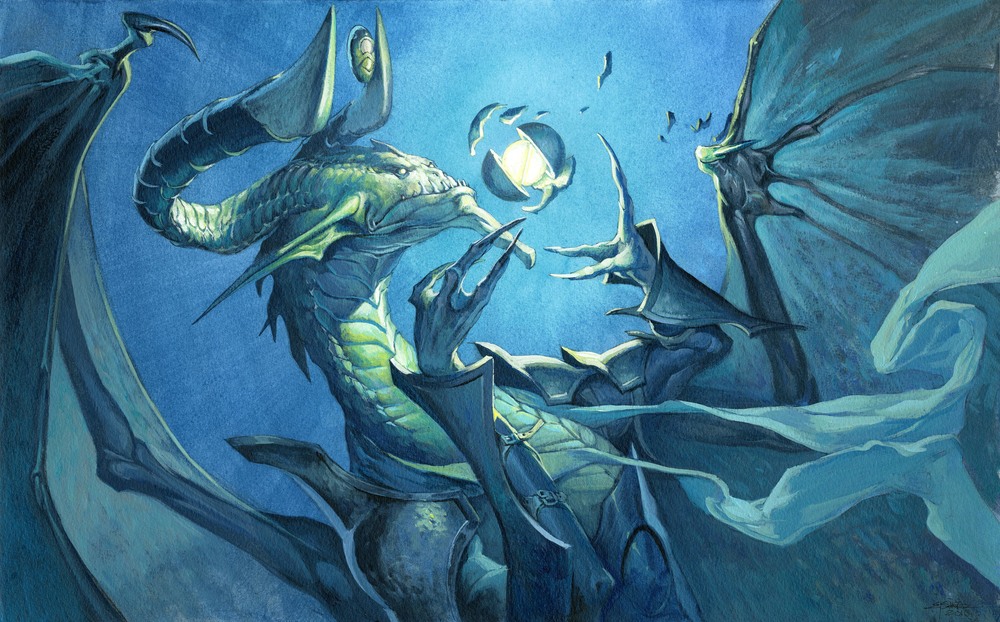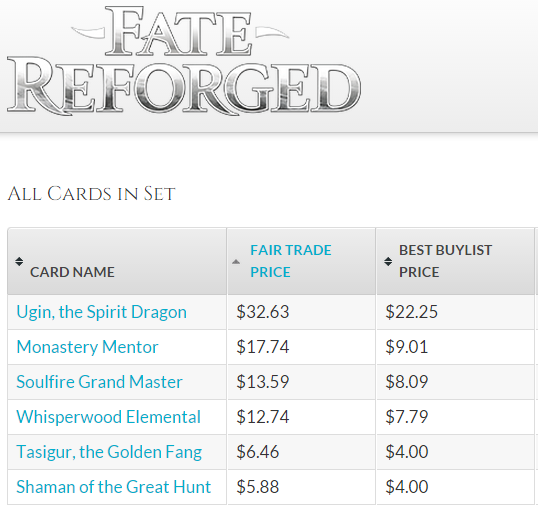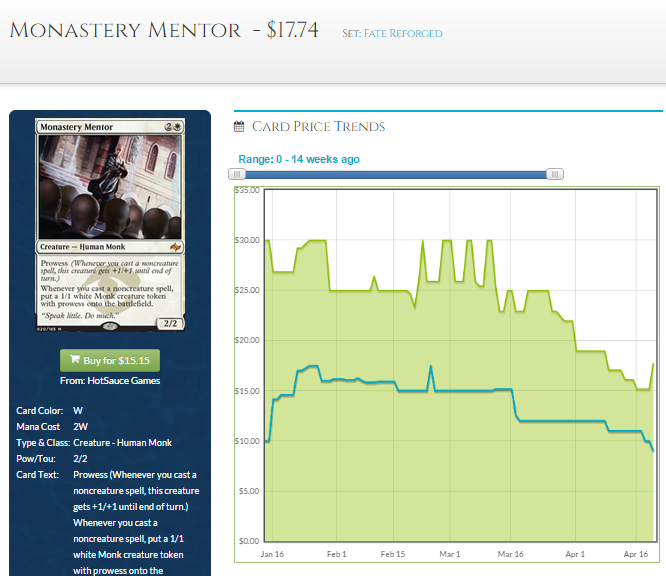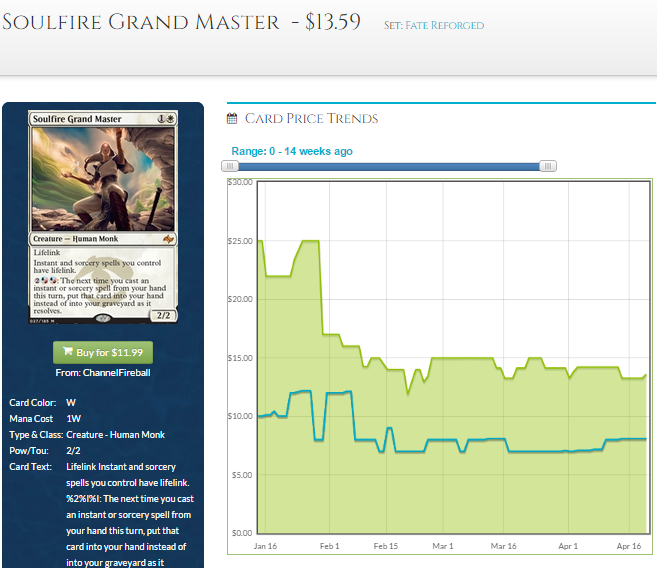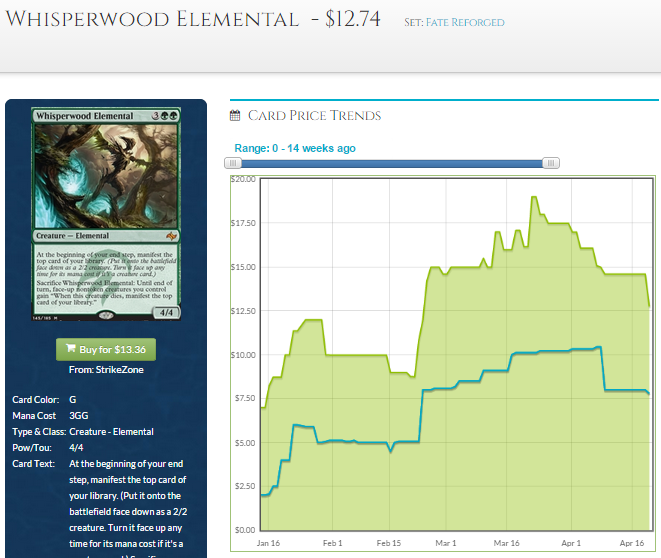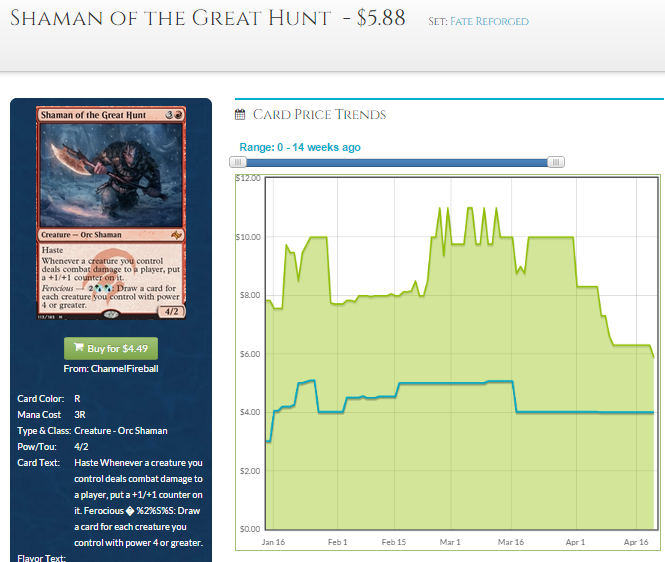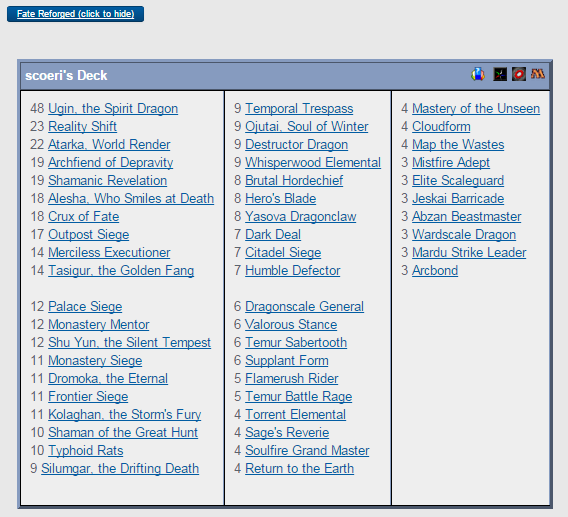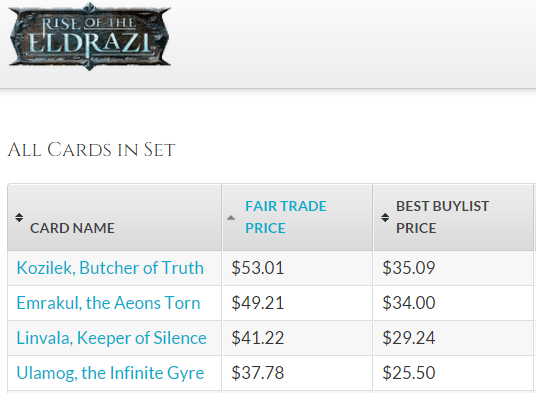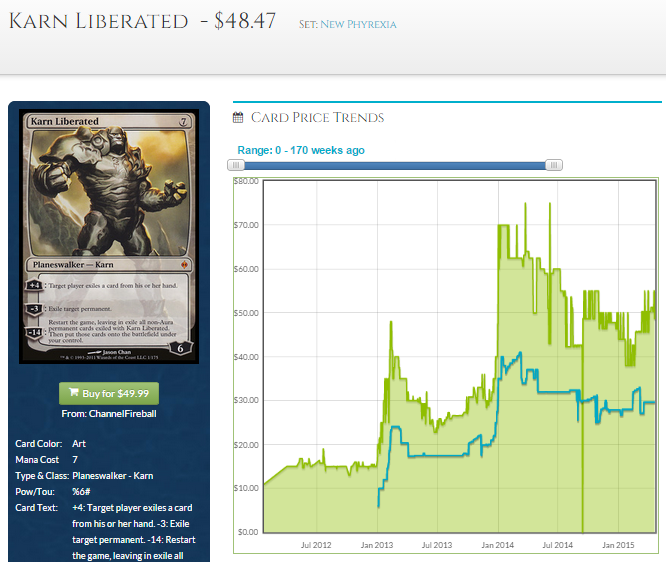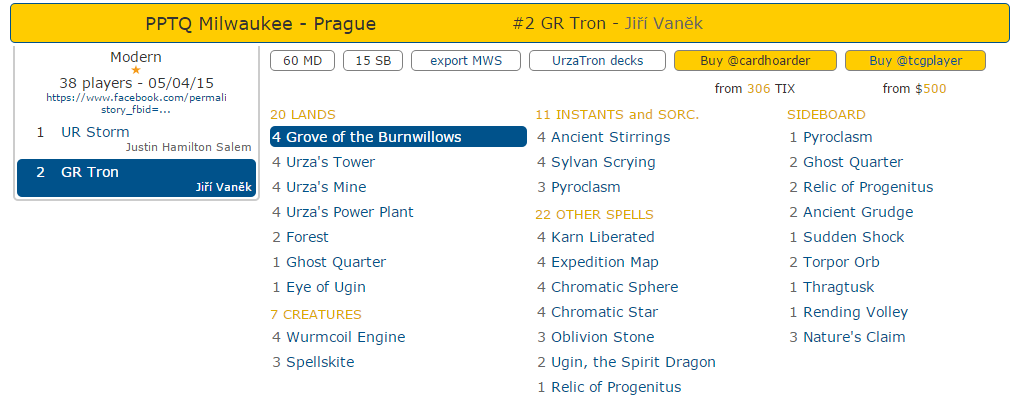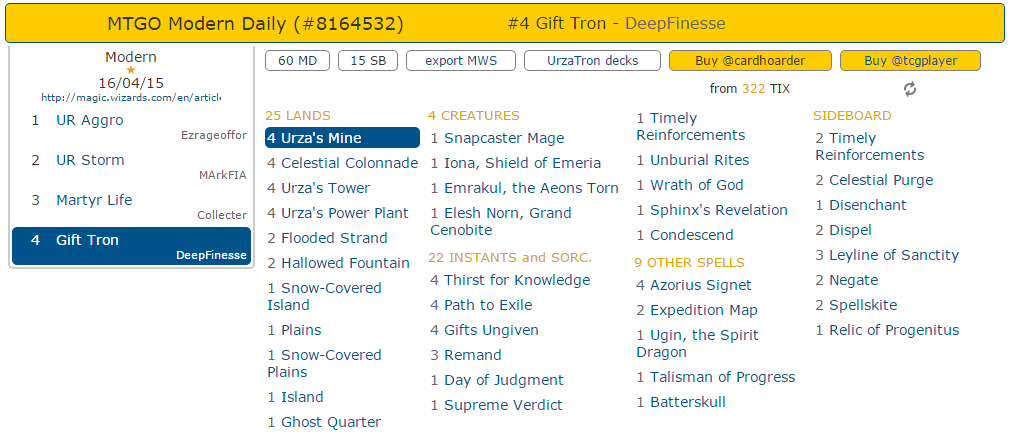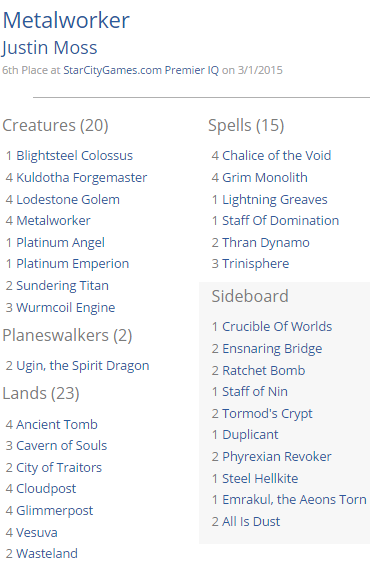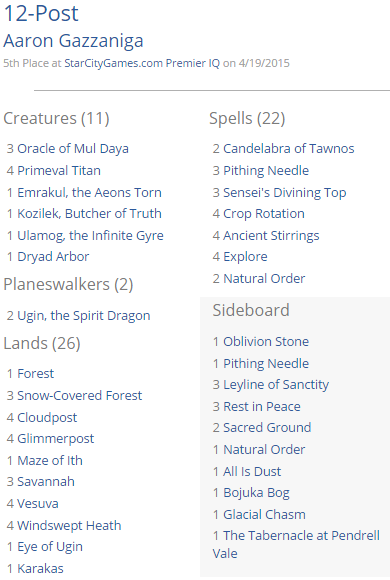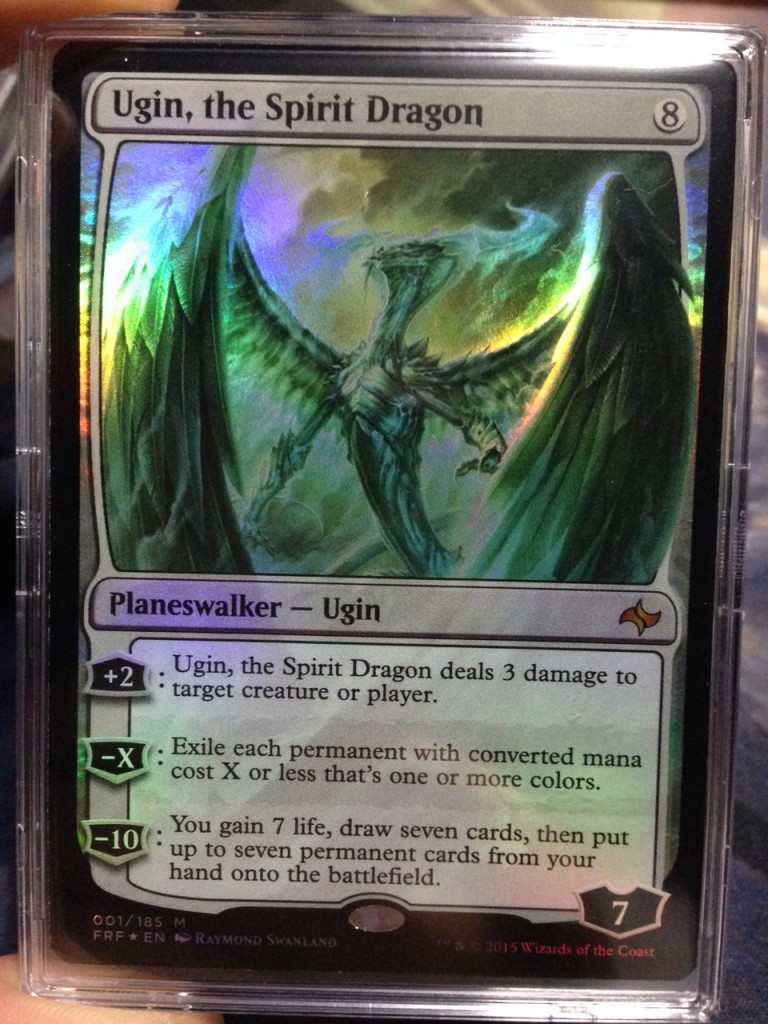By Guo Heng
There is a singular interest we all share in mtgfinance regardless of our motivation for engaging in mtgfinance: catching price spikes before they happen. Today’s article covers the tools we could use to help us stay ahead of price spikes. This article aims to be a summary of the resources available to both beginners and experts alike to keep ahead of price spikes, and indeed most of these tools are used by seasoned financiers. Whether you a beginner or an old guard, I hope you would find a thing or two useful in this guide.
Before I go on, let me share with you how I got into mtgfinance.
Why I Mtgfinance
I started Magic way back during Urza’s Destiny when I was a kid. Back then it was all kitchen table Magic and I was playing with a bunch of hand-me-downs from a cousin and whatever junk cards my neighbour, who had a veritable collection, gave me. The only time I had to fog up cash from my allowance was to buy the first dragon I owned, a Two-Headed Dragon (yup, I had something for dragons since I was a kid) and the occasional booster pack.
My first foray into low-level competitive Magic took place during Mirrodin, when I was a teenager. I was playing FNMs on a weekly basis and I managed to throw together an Affinity deck using my measly savings. It sounds unbelievable today, but back in 2003, it was possible to build the best deck in the format without having to spend a fortune. Those were the days where the most expensive Standard chase rares were $10 – $15, before the advent of mythic rares and $40 staples.
I stopped Magic when I went to college. Unfortunately there was no Magic scene where I was studying. I started again during New Phyrexia, at the height of Caw-Blade’s dominance in the format and Jace, the Mind Sculptor became the first Standard-legal card to hit $100. Knowing that Jace and company were about to rotate out, I begrudgingly waited for Innistrad to come out before investing in a competitive deck. It turned out to be a prescient move as Jace and Stoneforge Mystic ended up getting banned in the summer, a few months before they were slated for rotation.
However, come Innistrad, it was still quite expensive to build a tier one deck. Liliana of the Veil hit $50 briefly when Blue-Black Control and Solar Flare became the tier one decks during the early months of Innistrad Standard, and they both ran multiple copies of Lily. I began grinding PTQs during this time and the only reason I could afford to run Blue-Black Control was the fact that I preordered my Snapcasters and Lilianas, which turned out to be one of the rare few times an impulsive decision save me money.
At the same time I started listening to a fledgling podcast, the first ever to focus specifically on mtgfinance, Brainstorm Brewery. Brainstorm Brewery got me hooked on mtgfinance and introduced to me a lot of important fundamentals in mtgfinance.
When the metagame shifted to Blue-White Delver, I was late to adopt that archetype as Geist of Saint Traft, who was a $15 card during the first few months of Innistrad Standard spiked to $25 after Dark Ascension came out and I was finding it hard to justify spending so much on a new archetype. I ended up playing second tier decks, which compromised my tournament results for a couple of months. I reluctantly pulled the trigger and obtained my playset of Geists when he dropped back to $20 in the summer.
One of the things I’ve learned from my first year of grinding the competitive circuit is that the best way to keep up with the ever-evolving Standard metagame is to apply a bit of mtgfinance prescience in acquiring Standard staples. Unless you have access to a deep wallet or a playgroup with a large card pool, the privilege of playing the best deck every week is going to cost an arm and a leg.
The reason I got into mtgfinance is this: I’m a Spike trying to catch competitive staples before they spike. My primary motivation in mtgfinance is to make sure I can play tier one decks as they emerge, or tune my deck to include the latest tech, without having to spend a fortune doing so. Making a bit of money on the side is the icing on the cake and most of my profits end up subsidizing more Magic.
The best way to catch cards before they spike is to identify undervalued cards. Gone are the days where price adjustment moved at such a glacial pace and you can grab cards at their old price a week after the card saw a breakout performance at a large tournament. Card prices are propagated at a speed much faster than the monthly InQuest price list update these days.
Today, in your quest to catch cards before they spike, there are a few tools you should not leave home without. The following are the resources that help me identify undervalued cards and stay ahead of price spikes:
- The mtgfinance community
- Spread
- The Magic Online metagame
The MTGFinance Community
Keeping a finger on the pulse of the mtgfinance community is the most obvious one and I think most of you readers would already be doing this. Below is my reading list for mtgfinance and go-to resources for mtgfinance discussions.
First off are the financiers to follow on Twitter.
MTGPrice writers:
- Corbin Hosler (@chosler88)
- Travis Allen (@wizardbumpin)
- Sigmund Ausfresser (@sigfig8)
- Jason Alt (@JasonEAlt)
- Douglas Johnson (@Rose0fthorns)
- James Chillcott (@MTGCritic)
- Derek Madlem (@GoingMadlem)
- Jared Yost (@gildedgoblin)
- Danny Brown (@dbro37)
- Ross Lennon (@BoltTheBird)
- Cliff Daigle (@WordOfCommander)
- Houston Whitehead (@TNSGingerAle)
- Me! (@theguoheng)
Other mtgfinance writers:
- Saffron Olive (@SaffronOlive)
- ChazVMTG (@BoltSnapBolt)
- Ryan Bushard (@CryppleCommand)
- Marcel, not a writer, but 1/4th of the Brainstorm Brewery crew (@MarcelMTG)
- Chas Andres (@chasandres)
Listening to Brainstorm Brewery is a great way to keep up to date with the latest in mtgfinance. As a ProTrader, you get early access, so don’t skimp on the opportunity to hear the Brew crew’s pick of the week a day before everyone else finds out!
It is also worth checking out format-specific podcasts if you are interested financially in a particular format but do not have the time to engage in the format as much as you’d like to. I love EDH, and I play EDH when I have the time, but being the Spike I am, Standard always takes precedent as it is a PPTQ format. I am interested in the finances of EDH for two reasons: A) I would like to get my foils before they spike. B) Being the most popular casual format, EDH is an important factor to consider when evaluating a card’s long-term potential. The power of EDH-demand as a price driver should never be underestimated. Ugin, the Spirit Dragon is a contemporary example. Recently I have started to listen to The Command Zone and I’ve discovered that a number of cards which I have relegated as unplayable actually commands an interest in EDH.
Lastly, there are the forums. There are two mtgfinance-dedicated subreddits as of writing. The older one, r/mtgfinance is a compendium of articles and the newer one, r/mtgmarketwatch discusses individual cards.
And of course, the ProTrader private forums. If you have yet to check it out, the ProTrader forums is where you could find robust discussions about the latest card trends, the latest financially relevant developments in metagame and tips to help you get cards on the cheap. More importantly, you can find most of us MTGPrice writers actively engaging in the ProTrader forums discussions.
Spread
A card’s spread provides us with a metric to evaluate a card’s future price trajectory in an objective, unbiased manner. Spread is the percentage difference between a card’s fair trade price and its best buylist price. Spread is an indicator of market demand for a card: if stores are increasing their buylist price while the retail price of a card remains the same, it tells us that:
- The demand for the card is increasing.
- The card’s current retail price would not likely hold as vendors adjust their retail price to complement their increased buylist price.
Jared Yost wrote a good article on spread a while back and I would definitely recommend reading his article to a more detailed explanation on spread.
A card’s spread could help inform us about likely trajectory of a card. For example, Ugin, the Spirit Dragon‘s surprisingly low spread is a good indicator that we would unlikely see his price tank in the short-term, as Jared elaborated in his Fate Reforged spread review.
Of course, don’t make your decisions based on spread alone. There could be a multitude of factors affecting a card’s spread. Spread is an objective metric to help you decide if a card is undervalued or not on top of your subjective evaluation. For example, Sarkhan Unbroken has a ridiculously low spread of 26% as of writing. His fair trade price is $16.49 while his best buylist price is $12.21!
One of the convenience of using MTGPrice to check the price of singles is the ability to view the buylist price of major vendors in a single page. Upon closer inspection we can see that there is only one vendor who is buying Sarkhan Unbroken at $12.21 (though they are buying 20 copies) and that particular vendor only ramped up their buylist price today. Could it be due to Andrew Cuneo’s spicy Temur ramp list which debut yesterday at the Standard Super League? I would not pick-up my Sarkhan Unbroken yet, unless I see other stores follow suit. If other vendors start ramping up their buylist price for Sarkhan, and if I start seeing Cuneo’s Temur list pop up on Magic Online daily events, or this weekend’s StarCityGames, I would start securing my own copies of Sarkhan Unbroken (disclaimer: I don’t have any Sarkhans yet as I’ve been picking up the blue Dragonlords rather than planeswalkers prior to the overall price spike for Dragon of Tarkir).
Speaking of tournaments, the next resource I use to help inform my mtgfinance pick-ups is the Magic Online metagame. Before I go on to discuss using the Magic Online metagame as a tool to help you identify potential breakout cards, I would like to make a little note about using Magic Online trends to make paper decisions.
Magic Online Trends as Precursors to Paper Trends
Magic Online trends are potent precursors to paper trends during the first few weeks following a set’s release. Magic Online is a testing ground for grinders and pros so when there is increased demand for a particular card, there is good chance the demand would translate into paper Magic soon, when the deck breaks out in large paper tournaments.
Master of Waves started spiking on Magic Online a few days prior to Pro Tour Theros even though it saw no play in the StarCityGames Open during the first weekend of Theros‘ release. The only explanation I could come up with was that the price hike on Magic Online before the Pro Tour was driven by Pro Tour players testing Mono-Blue Devotion, which turned out to be the breakout deck of the Pro Tour. Likewise, Dragonlord Ojutai was the most expensive Dragons of Tarkir card on Magic Online for weeks, but paper Dragonlord Ojutai only overtook the price of Narset Transcendent this week on paper. It should have done so a while back as Narset was barely seeing play while multiple copies of Dragonlord Ojutai were played in both Esper Dragons and Ojutai Bant, two tier one decks in the current Standard metagame.
The weakness of using Magic Online trends as a predictor for paper trends is that Magic Online trends are driven primarily by competitive demand. And it works best only during the first few weeks following a set’s release, before the set’s supply on Magic Online gets bloated by Magic Online’s never-ending drafts.
I could be wrong, and Magic Online price movements could still be a reliable predictor even when the set is relatively mature. But I would need to look more into that, and in the mean time, I would err on the cautious side and only use Magic Online price trends only during the first weeks of a set’s Standard lifespan.
What I am interested in Magic Online however, is the metagame.
The Magic Online Metagame as a Precursor to the Paper Metagame
There are not many good things to be said about Magic Online, but one of them is that Magic Online allows us to peer slightly into the future of the evolving competitive metagame, courtesy of being the testing and practice ground for grinders and pros. The Magic Online impact on the evolution of the Standard metagame was so prevalent that Wizards restricted the publication of Magic Online daily event results to only one daily event per day in their efforts to slow down the rate at which Standard was getting solved. A few years back, we used to be able to see the results of every daily event that took place and there were (and still are) multiple daily events per day.
Whenever a new deck or a novel twist to an existing archetype finishes in the money (3-1 or 4-0) multiple times in Magic Online daily events, there is a good chance we could see it in an upcoming StarCityGames Open or Grand Prix. Larry Swasey took down a Magic Online PTQ with Jeskai Midrange before Mitchell Manders used the same deck to win Grand Prix Bilbao a week later and brought widespread attention to the archetype.
Keeping a close eye on the Magic Online metagame helps you identify emergent archetypes before they debut on paper. That may not translate into finding undervalued cards all the time, as new archetypes using different combinations of old cards would not drive prices.
However, sometimes you may stumble upon the next big thing before it becomes common knowledge. Right now, the most popular deck in the Modern daily events is Grixis Delver. The Modern metagame is not exactly at the forefront of the Magic community right now as the current PPTQ season is Standard and we do not have a major Modern event until Grand Prix Charlotte in mid-June. Grimes’ Delver runs three Tasigur, the Golden Fang. Tasigur is trending down at the moment. I have just completed my playsets of Tasigur last week. But I will be picking up more Tasigurs when Fate Reforged hits peak supply in late May, a month before we switch to the Modern PPTQs. The banana-king may return a profit sooner than I initially expected.
